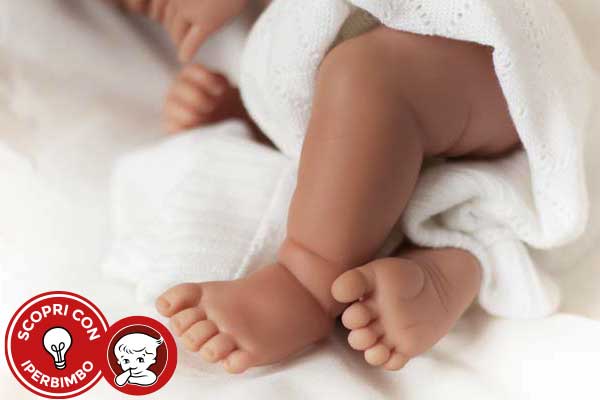Flatfoot in children - a physiological phenomenon
Before dealing specifically with the issue of flat feet in children, a premise is mandatory:
all children are born with flat feet, it is a physiological phenomenon.
And the feet
remain flat for a few years , since the little one needs a wider support base to learn to walk. The presence of a still poorly formed (or even absent) plantar arch offers an evident advantage, which should not be considered pathological. Especially since, in these cases,
flatfoot is not painful, is flexible and
does not cause movement difficulties.
It is observed in 97% of children up to 2 years of age, in 50% of 3-year-olds and 25% of 6-year-olds. At the age of 10 it disappeared in most cases. Up to the age of 8-12, in fact, the lack of a well-defined arch of the foot is often still only a passing situation. It will disappear with growth, when the vault of the foot takes on the usual curvature.
How does it look like?
Since a single cause is not known – it is probable in fact the concurrence of the various factors that contribute to forming the plantar arch – it is commonly defined as idiopathic flat foot.
In flat feet, the whole sole of the foot touches the ground when the child is standing, i.e. the plantar arches, which normally keep the inside of the foot off the ground, are instead flattened.
In children up to 3 years of age this conformation is physiological as the sole of the foot has a fat pad on the inner edge which helps to hide the plantar arch. Furthermore, at the beginning of walking, the still incomplete development of the muscles and ligaments of the foot contributes to widening and flattening the sole.
Other typical features are
inward heel strike (pronation) and inward heel tilt (calcaneus valgus) . Even the parent can easily find out by observing the child from behind while he is in an upright position. In the first phase of walking, from 10 months of life up to 3-4 years of age, the child has a valgus of 12-15 degrees. Only after 5-6 years will it stabilize at 5-7 degrees. Until then we can observe cases of children walking with their feet placed sideways or on toes. In any case, these are almost always transitory phenomena destined to evolve favorably during growth.
Indeed, it is with growth that the situation stabilizes: the arrangement of the bones changes, the panniculus of fat is reabsorbed, muscles and ligaments are strengthened.
Towards the age of 6-7, the foot tends to assume its normal shape and function . A raised area (medial plantar vault) then emerges on the inner edge. This area no longer rests on the ground but takes on an arched shape such as to allow the correct distribution of the weight of the body on the foot.

More symptoms
Pediatric flatfoot generally does not give any symptoms. With growth, around the age of 6-7, the child may report fatigue and pain when walking and playing sports.
Pain and difficulty in movement are alarm bells that it is important to report to the pediatrician.
Observation and diagnosis
Although it cannot replace a professional's clinical examination, the simple observation of the child and its movements already offers a first indication of the shape of its feet and the possible presence of flat feet. Even the parent can do it, initially, by observing the little one from behind in an upright position and barefoot, while walking or while standing up on his toes to climb.
This last case can reassure mums and dads with respect to the physiological (and presumably transitory) nature of the problem. In fact, when they see that the child is about to climb over the sides of the cot or onto a chair, they can observe what happens to the soles of his (bare) feet.
- If the muscles that connect the heel and the big toe tense, giving in that situation an arched shape to the sole of the foot (usually still flat)
- If the heels (usually angled inward) simultaneously align with the legs,
then in all probability it is the typical behavior of a physiological flat foot , which should not cause concern or require a special orthopedic visit. The clinical examination will still be carried out by the pediatrician during health checks using a podoscope, a sort of platform on which the child climbs resting his weight completely on his feet. A very useful tool because it allows you to frame the sole of the foot very well under load, showing its shape and footprint through an illuminated mirror.
Flat foot: how to cure it?
Reiterated that in most cases the idiopathic flat foot resolves itself with growth, sometimes the pediatrician may recommend making the child walk barefoot as much as possible. He can also suggest to make him wear soft and flexible shoes and to encourage motor activity. For example, walking on the outer edges of the feet, playing tiptoe games, running, jumping, climbing and dancing. In other cases,
he may suggest rehabilitative gymnastics or the use of orthotics. Surgical treatment is indicated only in cases of non-physiologic flexible flatfoot, with pain and progressive aggravation, and in symptomatic rigid flatfoot.
Taken from Born Mom | by Matthew Lerner
You may also be interested in:
6 tips to get back in shape after giving birth




